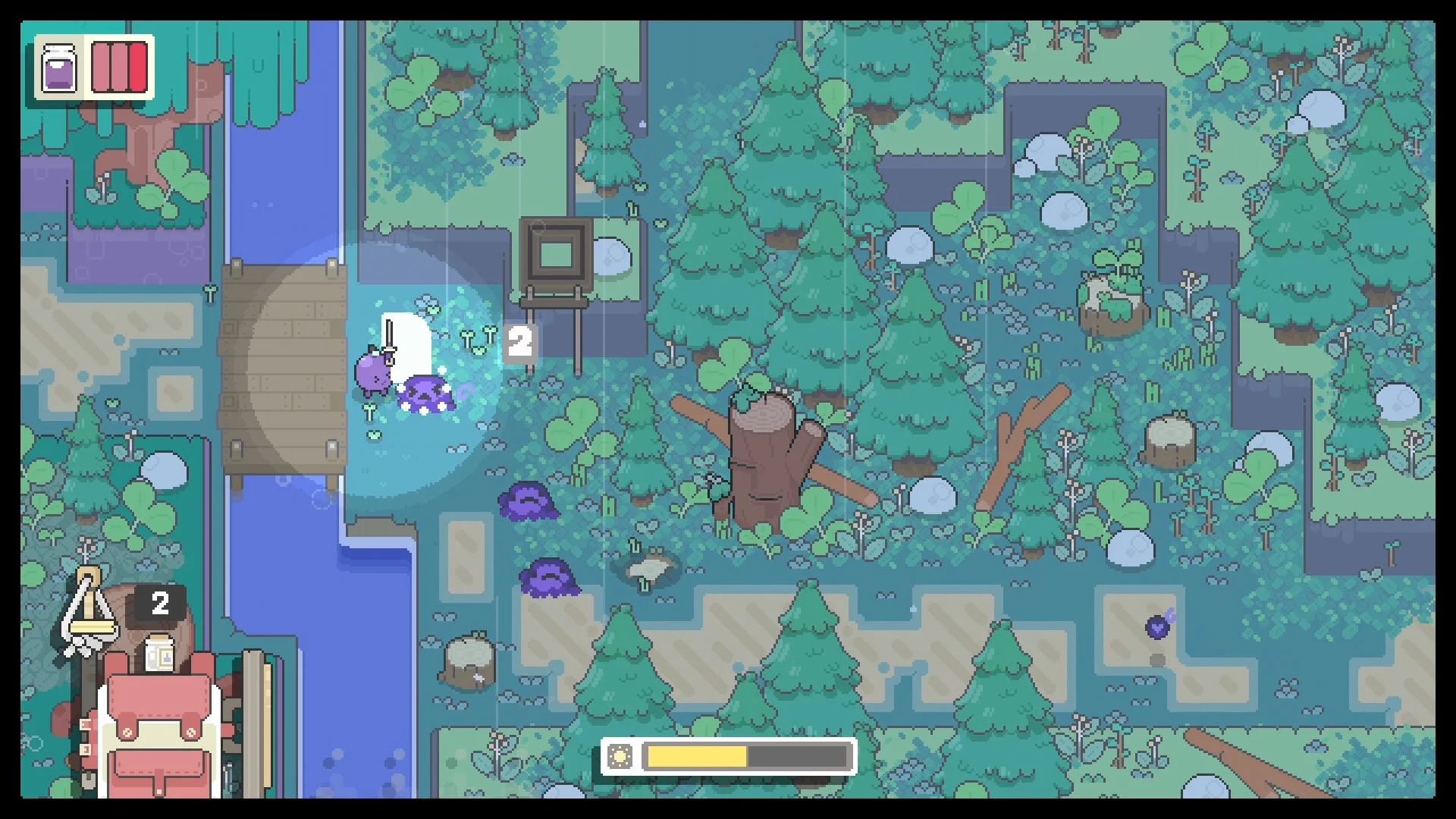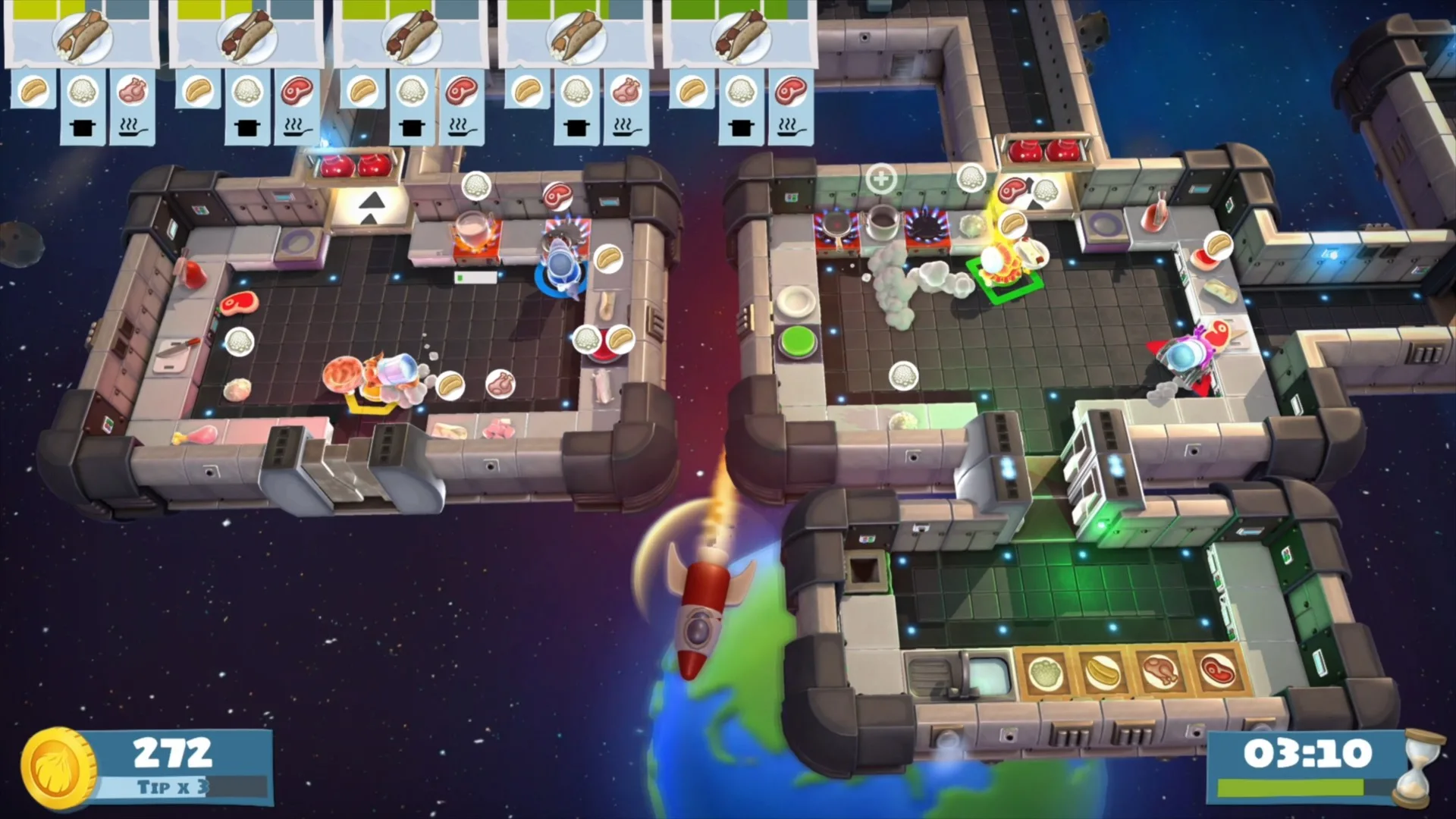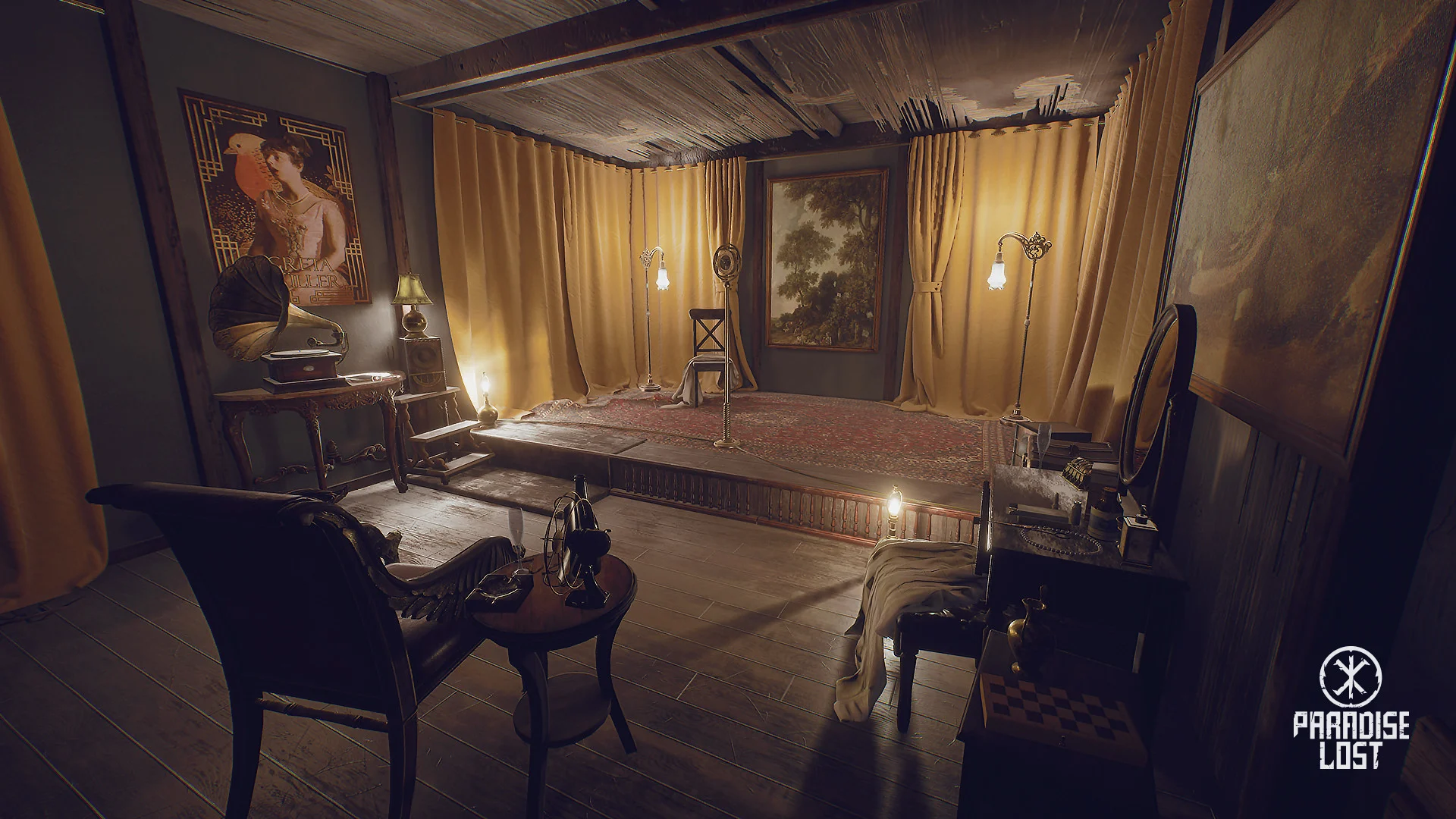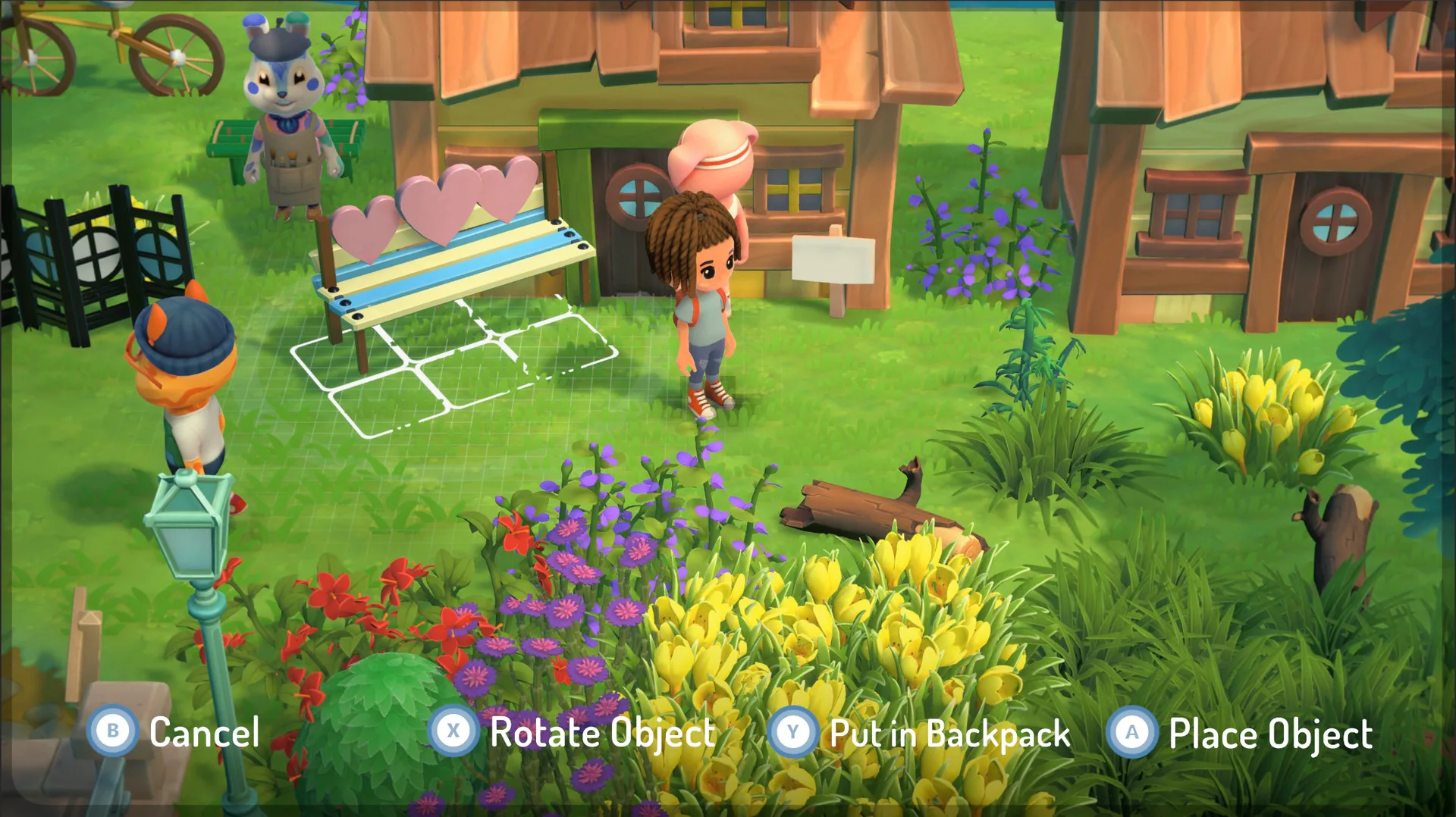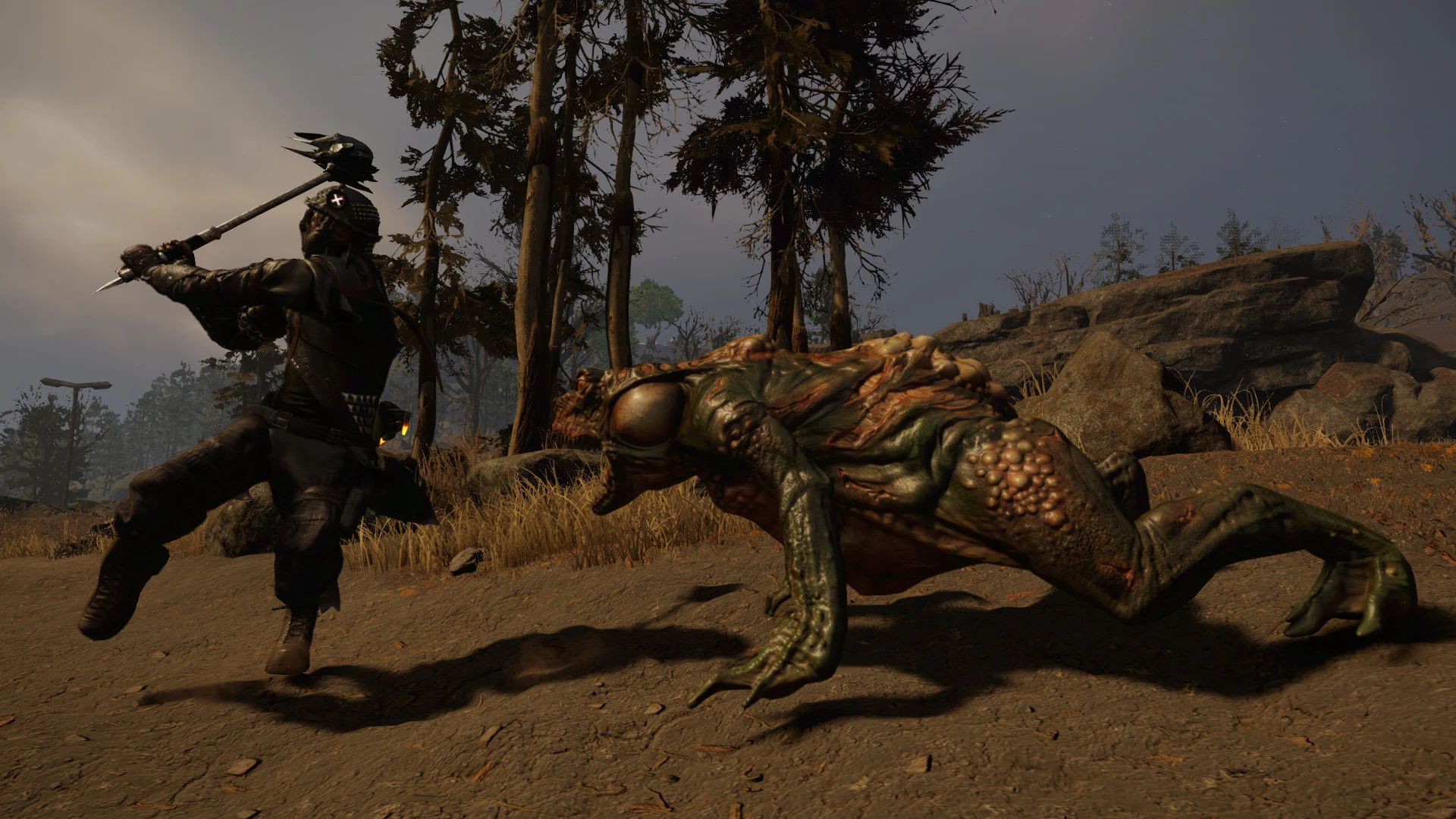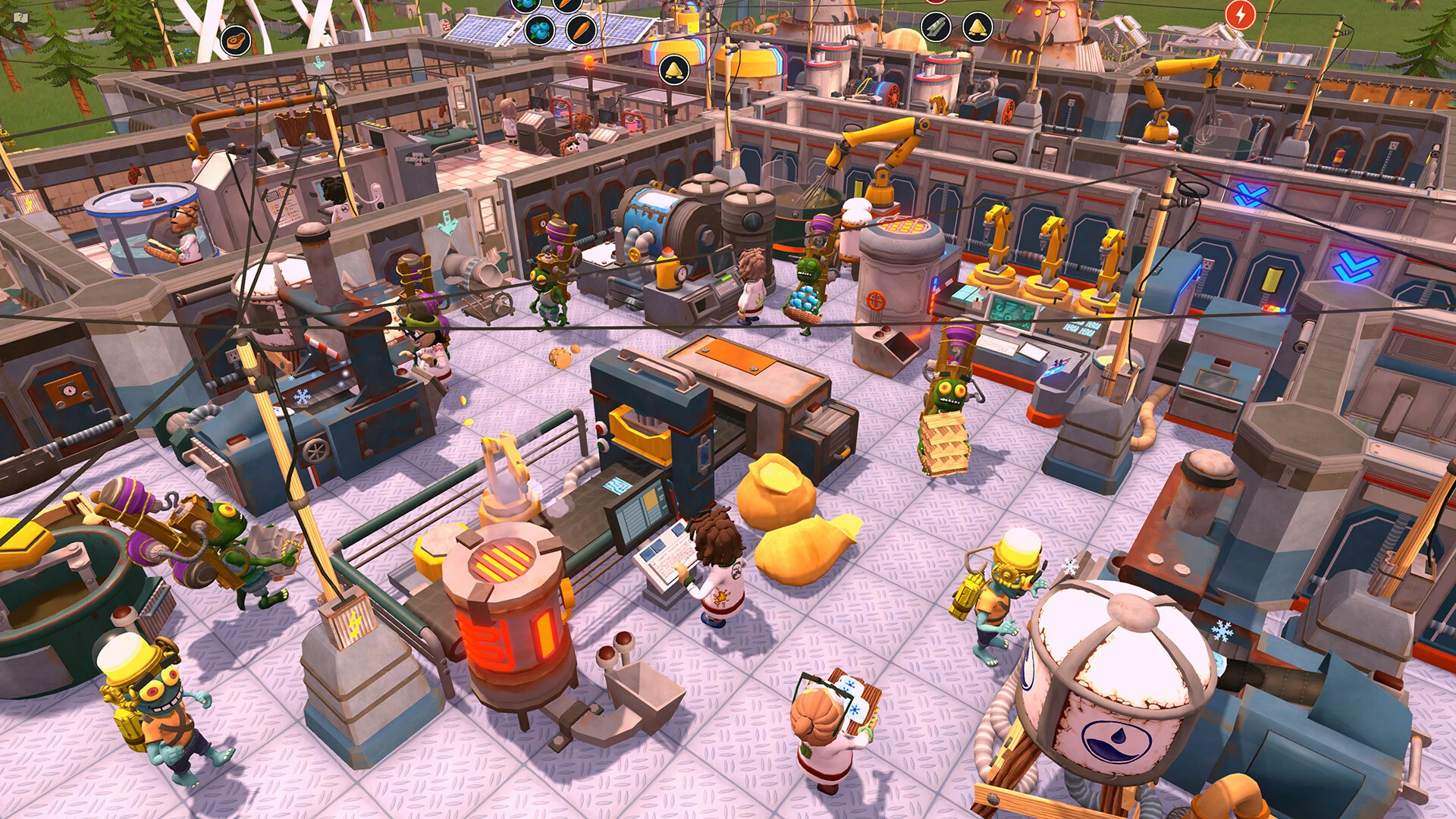When I first saw Garden Story two things stood out to me. First it was hard not to notice the game’s cute premise/atmosphere. Who doesn’t want to play a game about anthropomorphized plants. The other thing that interested me was the gameplay. From the trailer Garden Story really looked like what you would get if you combined a game like the old 2D Zelda games with a game like Stardew Valley or Animal Crossing. This seemed like a really interesting pairing and something that intrigued me. Garden Story is a charming and fun little action adventure game that is hard not to smile at while playing.
In Garden Story you play as Concord the youngest grape in The Grove. Despite hesitations from the locals you are given the role of Guardian. Guardians are responsible for protecting the inhabitants of The Grove as they fight against the Rot. In addition to fighting back the threat of the Rot, you must unite the residents to make a better world for all of them.
If I were to describe the gameplay of Garden Story I would say that it has two main elements. Probably the main focus of the game is the combat. The combat reminds me a lot of old 2D Zelda games. You are given a number of health points as well as a stamina meter. You have a basic attack which can be charged for a more powerful attack. Eventually you will receive a shield which blocks attacks. Finally you have a dodge/run which you can use to avoid enemy attacks. All of these actions use up your stamina. When you run out of stamina you basically have to wait for it to recharge in order to perform other actions.
The combat is pretty typical of the genre. It is pretty quick, but you also can’t just mash buttons as you will get hit by enemies. Much of the combat takes place in the normal environment as you fight against Rots, but there are also a number of dungeons that require you to clear a number of floors and then defeat a final boss. Some of the dungeons also have some basic puzzles that you have to solve. As you progress through the game you will acquire a number of bottles which you can fill with water in order to heal. If you should run out of health points though, the current day ends with you being returned to your home and losing some of your currency.
Basically if you have ever played a 2D action game like the older Zelda games you should have a pretty good idea of what to expect from the combat. This shouldn’t be taken as an insult as I really enjoyed this aspect of the game. The combat is fast and finds the right balance between simplicity and skill. Probably the only thing that is somewhat unique about the combat is that as your character has new experiences you will unlock memories. These act like upgrades which you can equip giving you various stat boosts. While this doesn’t really innovate the gameplay, I thought it was a clever twist. Basically the combat is enjoyable in the same way that it is for most good games in this genre. If you enjoy these type of 2D action games, I see no reason why you wouldn’t enjoy it in Garden Story as well.
I don’t know exactly how I would classify the difficulty of Garden Story. In theory the game isn’t particularly difficult especially for those that play a lot of games from this genre. The dungeons aren’t that difficult as the puzzles are straightforward and the boss fights are pretty easy to figure out. It is kind of weird but the game actually seems to get easier the further you get. This is because your stamina and health is so low to start the game. It is hard to fight when you can basically only take two actions before you have to back off. While it makes sense that you can perform more attacks once you become more experienced, the lack of stamina at the beginning of the game is kind of frustrating. As you get more stamina and health the game actually gets easier as you can use more actions in a row before having to await for it to recharge. Eventually between getting more health points and having more healing items, unless you are careless you don’t really have to worry much about running out of health.
The only other thing that makes the game a little more difficult than it probably should have been is the hit detection in the game feels off at times. Most of the weapons in the game don’t have a great range which means that you will have to get pretty close to enemies in order to attack them. It is sometimes hard to tell what constitutes the enemy and what doesn’t though leading you to sometimes take damage as you get too close to an enemy. Probably the worst culprit of this is the most basic enemy unit which breaks up into a smaller form once you deal damage to it. This makes it quite small and when it lunges at you it can be hard to hit. At times this can feel kind of unfair as you take damage when you don’t think you should have. Despite this the game is still not that difficult mostly because you will acquire more jars which allow you to take quite a bit of healing water with you on your adventures.
With the combat out of the way, lets move onto the game’s other main element. Throughout the game you will be visiting a number of villages. In your role as Guardian you are responsible for helping out each of these villages. This entails completing various chores for the villagers which can entail gathering certain resources, defeating enemies, or performing other tasks. Each chore that you complete will improve the town which unlocks additional upgrades and other options.
Eventually you will reach a point in the game where you unlock the ability to actually build in each of the towns. You will unlock the ability to fix elements of each town as well as place new objects around town. To build things you need to acquire various materials which come from objects and enemies you encounter while exploring. While a lot of the things you can build are cosmetic, some of them make things more convenient for you as you can access your storage and other things easier.
In a way Garden Story kind of feels like what you would get if you combined a 2D Zelda game with a citybuilder/community game such as Stardew Valley or Animal Crossing. While in each town you can talk with the various villagers, do chores for them, change up the look of the town, and even donate items you acquire to the local museum/library. These elements are pretty much what you would expect. They are quite relaxing as you can take your time as there is no real set objective. Fans of these type of games will likely enjoy this aspect of the game.
While I enjoyed this aspect of the game, I did have two issues with it. First I want to make it clear that the game has a much greater emphasis on the combat/adventure elements. You don’t even get the ability to build in the towns until around half way through the game. When you do get the ability to build, your options are a little limited. You can only place objects in certain sections of each town, and most of the objects that you can build are only cosmetic. You have some control over what your towns look like, but you never get full control. Thus this aspect of the game is a little more limited than you might initially expect.
The other issue with this aspect of the game is that the game sometimes puts too much of an emphasis on doing chores for the villagers. On their own the chores are fun enough. They are usually pretty simple, but are relaxing. To progress the story forward and to get each village to its highest level though, you are forced to complete quite a few of these chores. After a while they can become kind of repetitive as you will end up getting the same chores from time to time, and when you don’t the only real difference is the item you have to collect or the area where you have to defeat enemies. I wouldn’t say this is a big issue for the game, but occasionally the game does get a little repetitive.
While I was intrigued by the gameplay of Garden Story, I have to admit that the overall theme/atmosphere might have been what intrigued me the most about the game. Simply put the game is really cute/charming. How could a game where pretty much all of the characters are anthropomorphized fruit or plants who have created their own little civilization not be charming. The character design and the world in general are colorful and cute. The game is just really wholesome where it is hard not to smile while playing it. In some ways the game’s story is pretty much what you would expect it to be. The story is about defying the odds and showing others what you can do to make the world a better place. The game’s world has an interesting backstory, and the story goes in some interesting directions. Basically if you are a fan of cute/charming games, I think you will love this aspect of the game.
As for Garden Story’s length, it really depends on what you want to get out of it. If you just want to complete the main story objectives and rush through the game as quickly as possible, it will obviously take less time than if you want to take your time. The game doesn’t rush you in any way as you can take your time exploring the world, helping the villagers, and building the villages how you want them. Due to the more simplified customization options, I don’t see this aspect giving you as much time as a game like Stardew Valley or Animal Crossing; but if you are the type of player that just likes to take their time with these type of games you should get plenty of time out of the game. Basically I don’t see you getting hundreds of hours out of the game, but as long as you don’t rush too much I think you will get your money’s worth.
I have to admit that I had pretty high expectations for Garden Story heading into playing it. While the game has some issues, I think it mostly held up to my expectations. The combat reminds me a lot of the 2D Zelda games, but it is still quite enjoyable. Combined with the really cute and charming story/atmosphere, it is hard not to smile while playing the game. The game also mixes in elements of Stardew Valley and Animal Crossing which are pretty fun and relaxing as well. This element of the game is a little more simplistic than I expected though. Completing the same chores for the villagers can become a little repetitive after a while as well. Despite this Garden Story is still a fun and engaging experience that I really enjoyed playing.
My recommendation for Garden Story mostly comes down to what you expect to get out of it. If you are expecting another Stardew Valley or Animal Crossing you may be little disappointed as the game has a much greater emphasis on combat and the customization options are a little limited. If you are looking for a charming little action adventure game though I think you will really enjoy Garden Story and should consider picking it up.
Buy Garden Story online: Nintendo Switch, Steam
We at Geeky Hobbies would like to thank Picogram and Rose City Games for the review copy of Garden Story used for this review. Other than receiving a free copy of the game to review, we at Geeky Hobbies received no other compensation for this review. Receiving the review copy for free had no impact on the content of this review or the final score.

